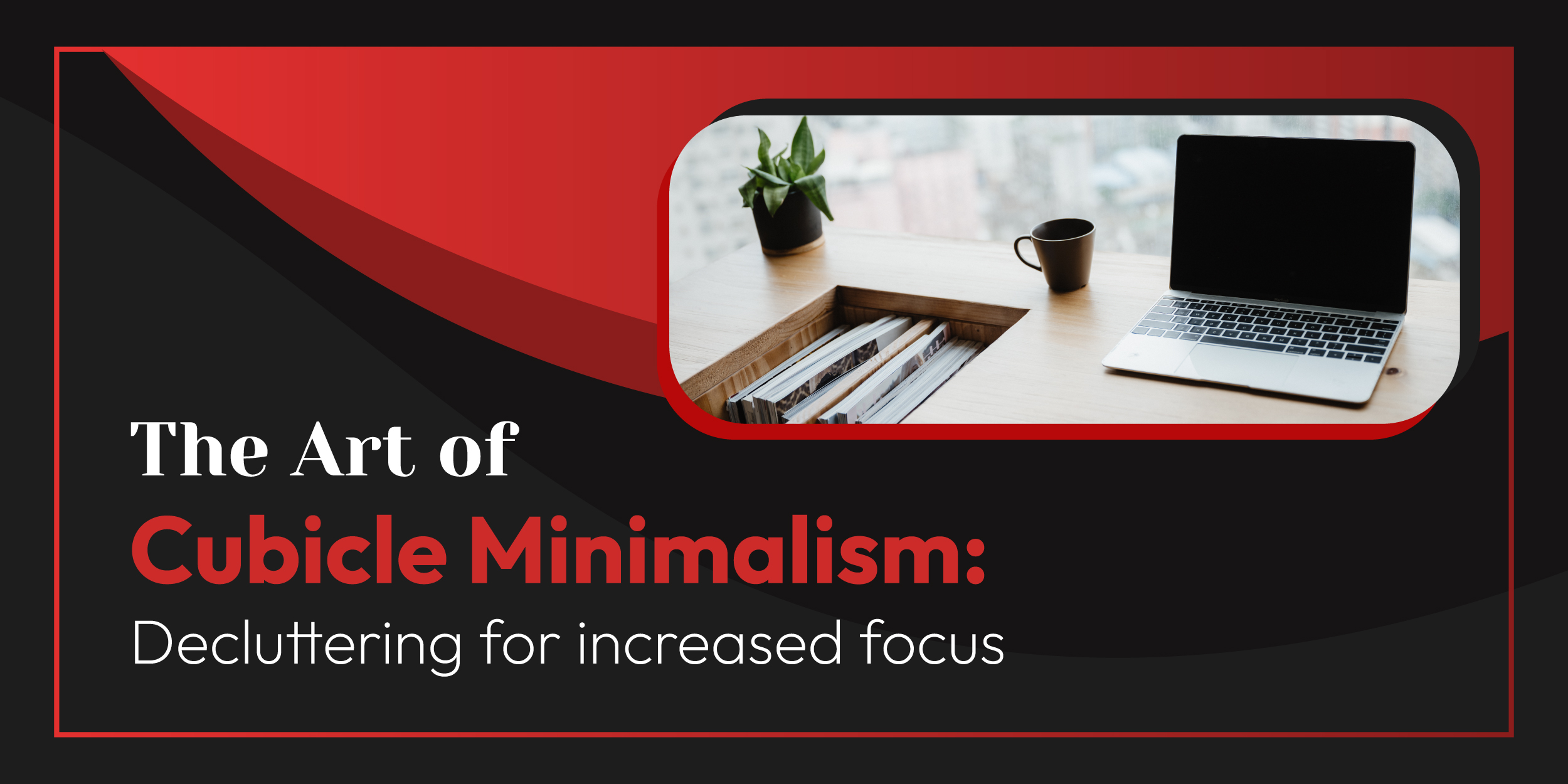Cubicle Minimalism
In the bustling world of modern offices, where information and distractions often compete for our attention, the concept of minimalism has emerged as a beacon of clarity and focus. Beyond sleek aesthetics, minimalism in cubicle design offers tangible benefits that can transform your workspace into a haven of efficiency and creativity. Join us as we delve into “The Art of Cubicle Minimalism” and discover how decluttering can lead to increased focus and productivity.
The Philosophy of Cubicle Minimalism
Minimalism is more than just an interior design trend; it’s a philosophy that emphasizes simplicity, intentionality, and the elimination of excess. In the context of cubicles, it means stripping away unnecessary distractions and decorations to create a workspace that nurtures concentration and innovation.
The Benefits of a Minimalist Cubicle
- Enhanced Focus: A clutter-free cubicle reduces visual and mental noise, making it easier to concentrate on tasks at hand. With fewer distractions, you can dive deep into your work and maintain a state of flow.
- Reduced Stress: Clutter and chaos in your cubicle can lead to stress and anxiety. Minimalist design promotes a sense of calm and order, helping you feel more relaxed and in control.
- Improved Organization: Minimalism encourages meticulous organization. When everything has its place, you spend less time searching for things and more time being productive.
- Increased Creativity: A clean slate invites fresh ideas. Minimalist cubicles can spark creativity by offering a blank canvas for inspiration to flourish.
The Art of Decluttering
Decluttering your cubicle requires a systematic approach. Here are some steps to get started:
- Assess Your Workspace
Begin by evaluating your current cubicle setup. What items are essential for your daily tasks, and what can be removed or stored elsewhere? Be ruthless in your evaluation, focusing on functionality.
- The “One-Year Rule”
If you haven’t used an item in your cubicle for over a year, it’s likely you can do without it. Consider donating or storing infrequently used items to free up valuable space.
- Digitize Where Possible
Minimize paper clutter by scanning documents and storing them digitally. Invest in cloud storage solutions to access important files from anywhere.
- Streamline Furniture
Simplify your furniture choices. A minimalist cubicle typically features essential items such as a desk, ergonomic chair, and storage solutions. Keep it clean and uncluttered.
- Opt for Neutral Colors
Choose a neutral color palette for your cubicle decor. Whites, grays, and earth tones create a calming and distraction-free atmosphere.
- Create Zones
Designate specific zones within your cubicle for different tasks. A clear workspace for computer tasks, a reference zone for essential documents, and a personal zone for minimal personal items.
- Embrace Empty Space
Minimalism celebrates the power of empty space. Allow your cubicle to breathe by leaving open areas on your desk and walls. It promotes a sense of clarity and purpose.
- Maintain Regular Decluttering Sessions
Make decluttering a routine. Schedule regular sessions to reassess your cubicle and remove any items that have crept back in.
Minimalism is a powerful philosophy that can transform your cubicle into a space of clarity, focus, and creativity. By intentionally decluttering and simplifying your workspace, you’ll find that less truly can be more. Embrace “The Art of Cubicle Minimalism” to unlock increased productivity, reduced stress, and a newfound sense of purpose in your workday. Minimalism is not about sacrificing comfort or personality; it’s about prioritizing what truly matters and letting it shine in your cubicle oasis of minimalism.



